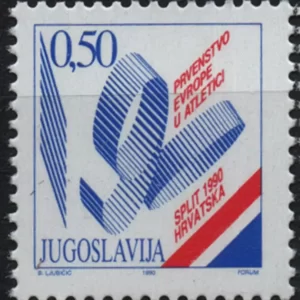Bosnia year 2004 stamps / First Serbian Rebellion against Turkey MNH**
The Serbian Revolution was a significant national uprising and constitutional transformation in Serbia that occurred between 1804 and 1835. During this period, the territory of Serbia transitioned from an Ottoman province to a rebel territory, a constitutional monarchy, and ultimately modern Serbia.
The catalyst for the Serbian Revolution was the brutal massacre known as the Slaughter of the Knezes in 1804, during which the Ottoman Janissaries executed prominent Serbian nobles throughout Central Serbia. The severed heads of these nobles were displayed in public squares as a warning against further resistance to Ottoman rule. This event ignited the Serbian Revolution, which aimed to end the 370 years of Ottoman occupation.
The initial phase of the revolution, spanning from 1804 to 1817, was characterized by violent armed uprisings against Ottoman rule, culminating in a ceasefire. The subsequent period from 1817 to 1835 witnessed a more peaceful consolidation of political power in an increasingly autonomous Serbia. During this time, Serbian princes gained recognition of their right to hereditary rule in 1830 and 1833, and the young monarchy experienced territorial expansion.
A crucial development in the Serbian Revolution was the adoption of the first written Constitution in 1835, which abolished feudalism and serfdom and established Serbia as a suzerain state. The term “Serbian Revolution” was coined by the German academic historian Leopold von Ranke in his book “Die Serbische Revolution,” published in 1829.
These events marked the foundation of modern Serbia and paved the way for its emergence as an independent and sovereign nation.











Reviews
There are no reviews yet.